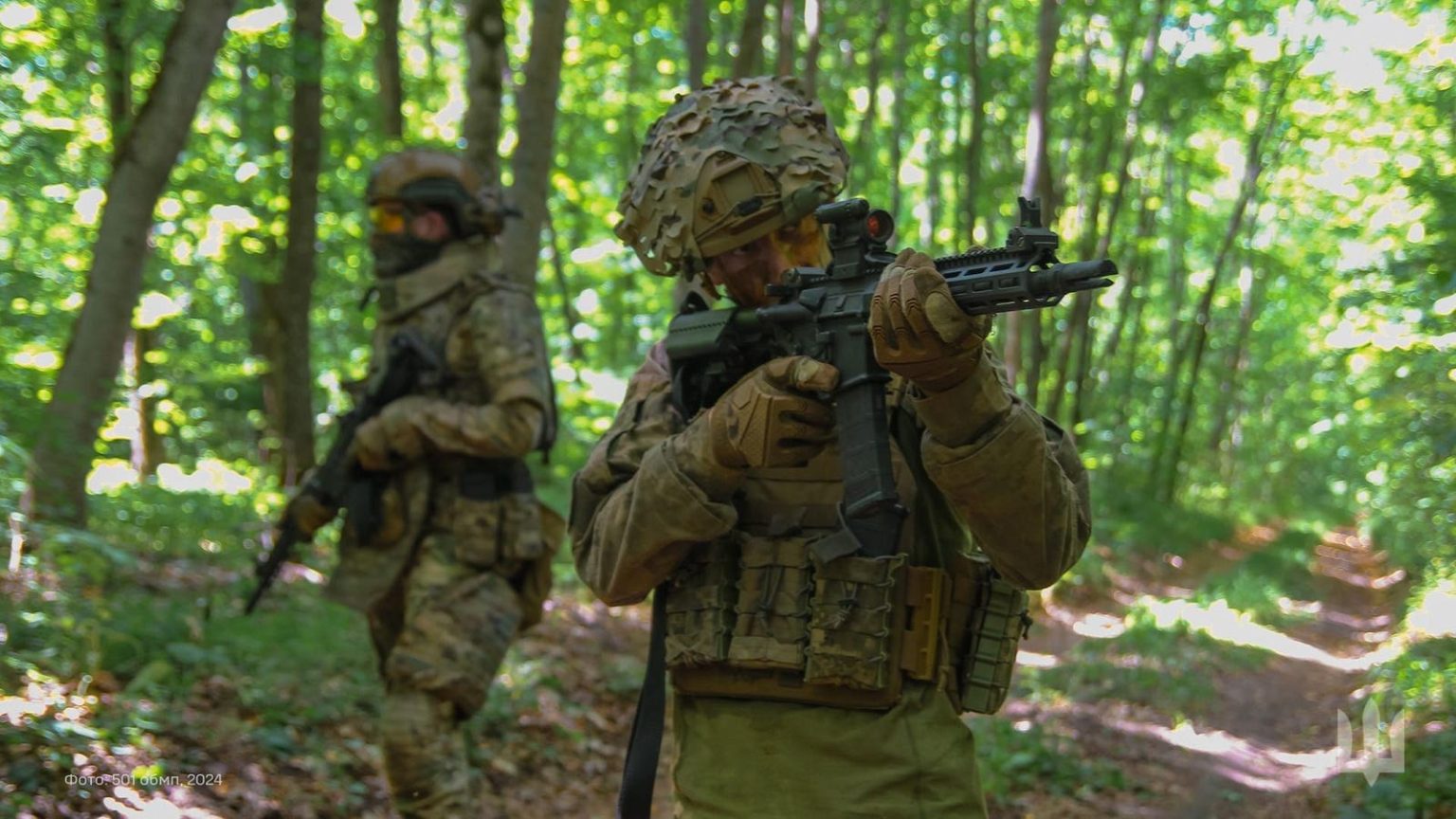Yet another Ukrainian unit has joined Ukraine’s invasion of Russia’s Kursk Oblast. On Sunday, the Ukrainian marine corps’ 501st Marine Battalion announced its presence in Kursk—in a video depicting marines tearing down a Russian flag “in one of the settlements of Kursk.”
The battalion’s 400 or so marines “are at the forefront of combat missions,” the unit stated. But that wasn’t always the case. The 501st Battalion has an unfortunate history of avoiding combat. In that sense, the Kursk campaign is an opportunity for redemption.
The 501st Marine Battalion was part of the Ukrainian garrison in Crimea when Russian troops invaded the strategic peninsula in 2014. As outgunned Ukrainian forces fled the peninsula, just 64 of the 501st Marine Battalion’s personnel joined them. The others—potentially hundreds in all—voluntarily stayed in Crimea, effectively siding with the peninsula’s Russian occupiers.
The Ukrainian defense ministry rebuilt the 501st Marine Battalion. Eight years later, in the early months of Russia’s wider invasion of Ukraine, the battalion joined the garrison in Mariupol on the Black Sea coast.
Russian troops laid siege to Mariupol, ruthlessly starving and bombing the city’s garrison as well as its civilian population. The main garrison—more than 2,000 strong—held out for three months, eventually falling back to the the Azovstal steel plant before finally surrendering in late May 2022 when food, ammunition and medicine ran out.
The 501st Marine Battalion was not among the final holdouts. Instead, it gave up six weeks earlier during the first week of April.
Without coordinating with adjacent forces, around 270 marines abandoned their positions and their weapons and marched into Russian captivity. “We want to avoid victims and bloodshed,” 501st Marine Battalion senior lieutenant Kostiantyn Bezsmertnyi told Russian state media following the mass surrender. “I’m tired of seeing people die.”
Authorities in Kyiv opened an investigation into the marines’ unauthorized surrender, reportedly focusing their attention on Bezsmertnyi and another top officer. Over the next two years, around 20 of the marines returned to Ukraine as part of prisoner swaps. But 250 or so remain in Russia.
Decimated in Mariupol, the 501st Marine Battalion had to be rebuilt again. Reconstituted with new officers and fresh recruits, the unit rejoined the war in 2023—initially fighting in southern Ukraine’s Kherson Oblast. By this summer, the unit was in Kharkiv Oblast in the north, defending the town of Vovchansk from a major—and ongoing—Russian incursion.
The 501st Marine Battalion apparently traveled the 100 miles between Vovchansk and Kursk last week, as the Ukrainian invasion corps was extending its control past the town of Sudzha, six miles from the Russia-Ukraine border.
With the battalion’s arrival, the invasion force now includes troops from the army, the air assault force, the territorials and the marines. The marines might have the most to prove.
Sources:
1. 36th Marine Brigade: https://t.me/ua_marines_36brigade/2055
2. Ukraine Control Map: https://www.google.com/maps/d/u/0/viewer?mid=1xPxgT8LtUjuspSOGHJc2VzA5O5jWMTE&ll=50.30125201056195%2C36.96152604504341&z=12
3. Militaryland: https://militaryland.net/ukraine/marine-corps/501st-marine-battalion/
4. The Media Initiative for Human Rights: https://mipl.org.ua/en/disappearing-of-the-501st-marine-battalion-unknown-circumstances-of-captivity/
Read the full article here





